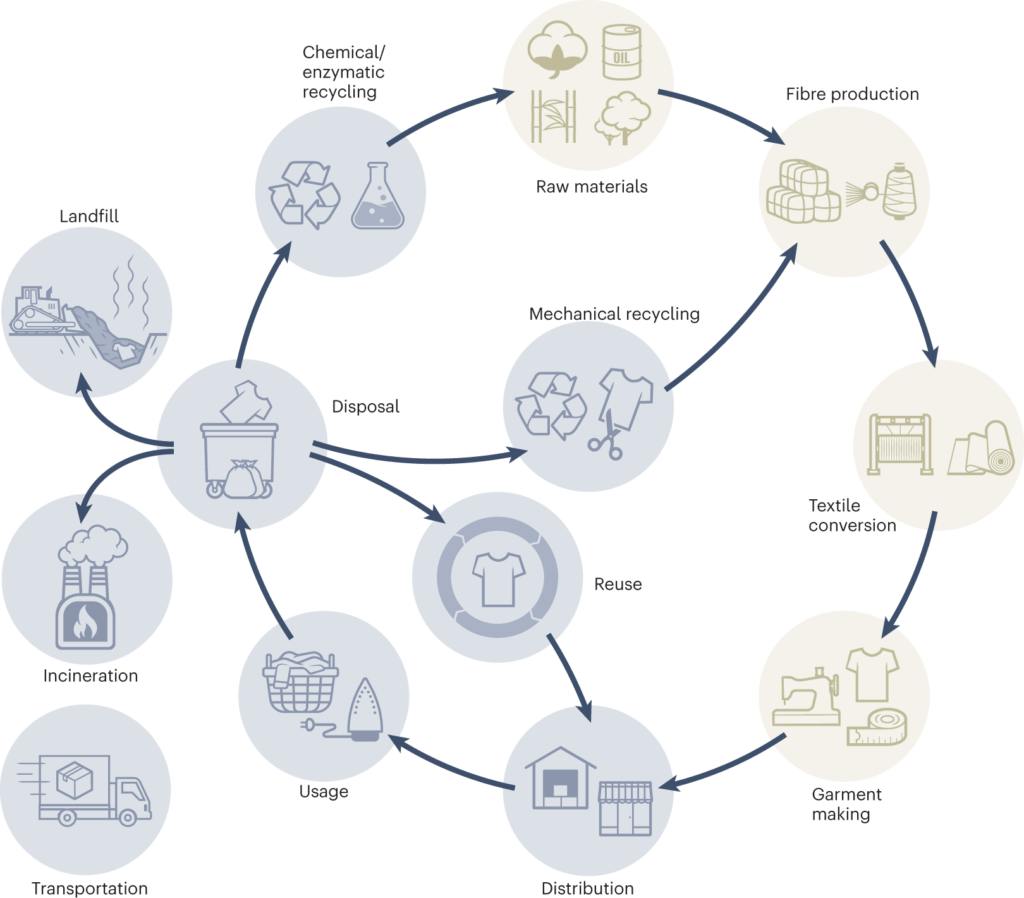Can You Recycle Rayon and Modal Fabrics?
Introduction
Understanding fabric compatibility is crucial in fashion and sewing, as it impacts the quality and longevity of garments. Rayon and modal fabrics share similarities, making them a popular choice for blending. In this article, you’ll learn about their compatibility, benefits, challenges, and tips for using them effectively.
Compatibility Analysis
Yes, rayon and modal can be mixed effectively in both fashion and home decor. These fabrics are compatible due to their similar fiber content and properties. Both are semi-synthetic fibers derived from cellulose, offering a soft texture and good drape. They share similar care requirements and stretch characteristics, making them suitable for blending.
Key Compatibility Factors
- Texture: Both fabrics have a smooth, silky texture, which contributes to a cohesive feel when combined.
- Weight and Stretch: Modal is slightly heavier and more elastic than rayon, but both offer a comfortable stretch.
- Care Requirements: Both fabrics require gentle washing and low-temperature ironing, simplifying maintenance.
- Durability: Modal is generally more durable than rayon, providing a longer lifespan for mixed garments.
Fabric Properties Comparison Table
| Property | Rayon | Modal |
|---|---|---|
| Fiber Content | Semi-synthetic (cellulose) | Semi-synthetic (cellulose) |
| Weight and Thickness | Lightweight | Medium weight |
| Breathability | High | High |
| Moisture-Wicking | Moderate | High |
| Stretch and Elasticity | Low to moderate | Moderate to high |
| Wrinkle Resistance | Low | Moderate |
| Care Instructions | Gentle wash, low iron | Gentle wash, low iron |
| Durability | Moderate | High |
Benefits of Mixing These Fabrics
Mixing rayon and modal fabrics offers several advantages:
- Enhanced Texture: Combining these fabrics adds visual interest and a luxurious feel.
- Improved Comfort: The softness of both materials ensures comfort, while modal’s elasticity enhances fit.
- Better Drape: The blend drapes beautifully, ideal for flowing garments.
- Cost-Effectiveness: Rayon is generally less expensive, making the blend more affordable.
- Seasonal Versatility: Suitable for both warm and cool climates due to breathability.
- Design Possibilities: Offers a range of styling options, from casual to formal wear.
Potential Challenges
Despite their compatibility, mixing rayon and modal can present challenges:
- Different Shrinkage Rates: Pre-wash fabrics to prevent uneven shrinkage.
- Conflicting Care Requirements: Follow the gentlest care instructions to maintain fabric quality.
- Texture Clash or Pilling: Use fabric softeners and gentle washing to minimize pilling.
- Seam Puckering: Use appropriate sewing techniques to avoid puckering.
- Color Bleeding or Fading: Wash similar colors together and use color-safe detergents.
Practical Solutions
- Pre-wash fabrics to stabilize them.
- Use a ballpoint needle to minimize fabric damage.
- Choose patterns that accommodate the fabric’s drape and weight.
Sewing & Styling Tips
- Sewing Techniques: Use a serger or zigzag stitch to finish seams.
- Needle and Thread: Opt for a size 70/10 ballpoint needle and polyester thread.
- Interfacing and Stabilizer: Use lightweight interfacing for added structure.
- Seam Finishing: French seams or overlocking prevent fraying.
- Pattern Selection: Choose patterns with simple lines to showcase the fabric’s drape.
- Styling Ideas: Pair with denim for a casual look or silk for elegance.
Care & Maintenance Guide
- Washing Instructions: Use cold water and a gentle cycle.
- Drying Recommendations: Air dry to prevent shrinkage.
- Ironing and Steaming: Use a low setting and steam from a distance.
- Stain Removal: Treat stains promptly with mild detergent.
- Long-Term Care: Store in a cool, dry place to prevent damage.
FAQ Section
-
Can you wash rayon and modal together?
Yes, wash them together using a gentle cycle and cold water. -
Will rayon shrink more than modal?
Rayon may shrink slightly more, so pre-wash both fabrics. -
What needle size should I use for sewing these fabrics together?
Use a size 70/10 ballpoint needle for best results. -
Can you mix rayon and modal in one garment?
Absolutely, they blend well for a cohesive look. -
How do you prevent fabric issues when combining these fabrics?
Pre-wash, use color-safe detergents, and handle gently. -
Is it okay to mix rayon and modal for upholstery?
While possible, consider durability and care requirements. -
What’s the best way to finish seams with these fabrics?
Use French seams or overlocking to prevent fraying.
By understanding the compatibility and care requirements of rayon and modal fabrics, you can create stylish and durable garments that stand the test of time. Whether you’re designing for fashion or home decor, these tips and insights will help you achieve the best results.



Leave a Reply